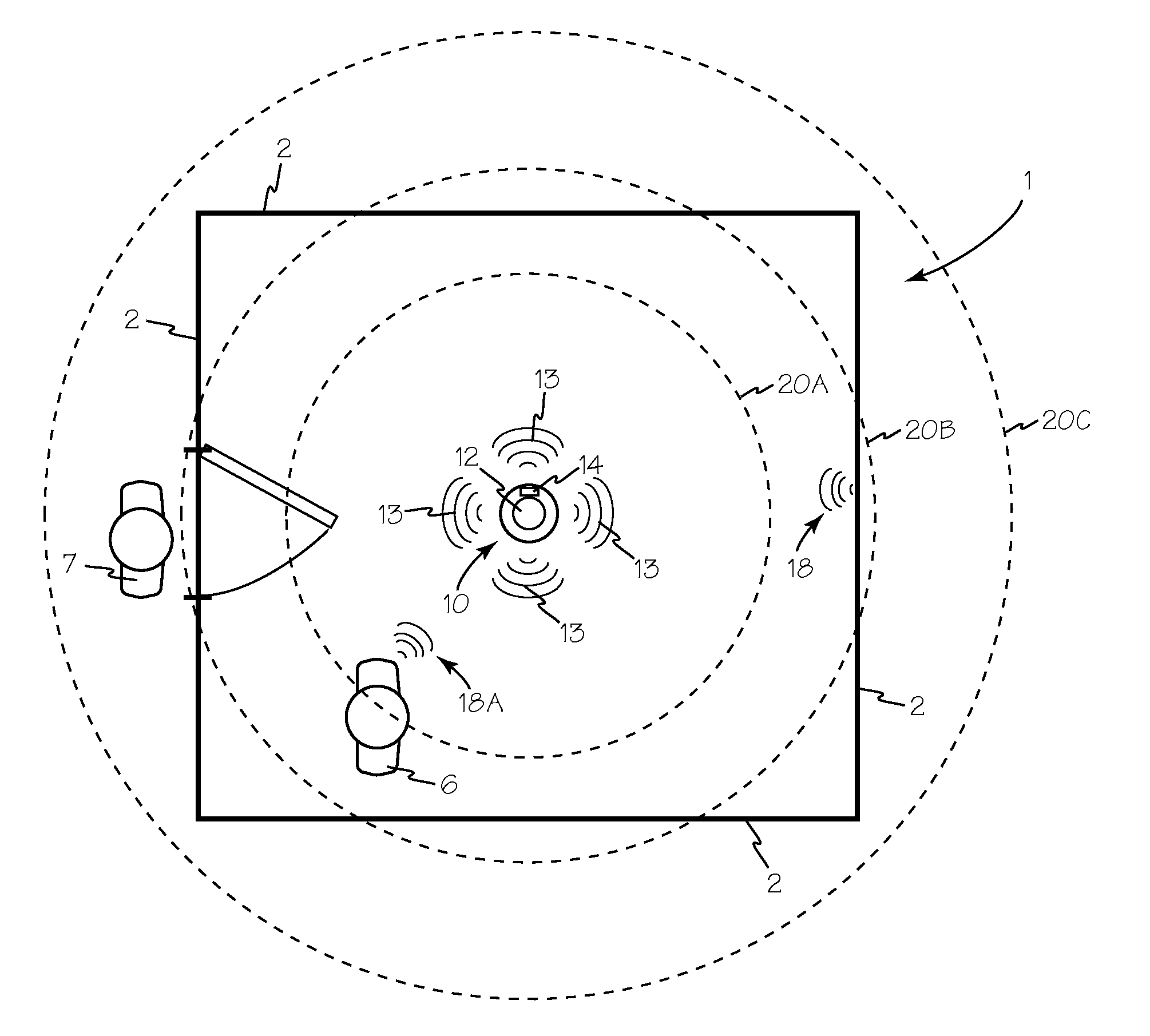Ultrasonic Sensor Control System for Occupancy Sensing
a sensor control and ultrasonic technology, applied in the field of electric control, can solve the problems of ineffective sensitivity of the receiver in minimizing inappropriate activation, too large coverage area of the sensor, and inability to detect the presence of objects, etc., and achieve the effect of reducing noise in the system, improving receiver efficiency, and high efficiency
- Summary
- Abstract
- Description
- Claims
- Application Information
AI Technical Summary
Benefits of technology
Problems solved by technology
Method used
Image
Examples
Embodiment Construction
[0014]FIG. 1 is a top view, and FIG. 2 is a side view of room 1 equipped with adjustable amplitude active ultrasonic occupancy sensor 10 which is illustrated in FIG. 3. Sensor 10 includes a transmitter 12 and a receiver 14 which receives energy from power supply 15. Operation of transmitter 12, receiver 14 and power supply 15 are all controlled by microprocessor or controller 16. Transmitter 12 continuously transmits ultrasonic energy 13 into room 1. Ultrasonic energy 13 is reflected as incoming energy 18 by anything occupying room 1 including walls 2 and floor 3. The amplitude of power applied to transmitter 12 can be adjusted to control the amplitude of ultrasonic output signal 13 and thus, the amplitude of reflected signals from the contents of the room, such as reflected signal 18. The amplitude of output energy 16 is set such that reflected signals 18 from the edges of a desired zone of sensitivity such as zones 20A, 20B and 20C are at or below the noise threshold of receiver 1...
PUM
 Login to View More
Login to View More Abstract
Description
Claims
Application Information
 Login to View More
Login to View More - R&D
- Intellectual Property
- Life Sciences
- Materials
- Tech Scout
- Unparalleled Data Quality
- Higher Quality Content
- 60% Fewer Hallucinations
Browse by: Latest US Patents, China's latest patents, Technical Efficacy Thesaurus, Application Domain, Technology Topic, Popular Technical Reports.
© 2025 PatSnap. All rights reserved.Legal|Privacy policy|Modern Slavery Act Transparency Statement|Sitemap|About US| Contact US: help@patsnap.com



